Pilotwings Resort
 The island from Lost is its own character. It's mysterious, malevolent,
and seemingly sentient. It's more than just a setting, interacting with
each of the show's characters as much as any other person stranded
there.
The island from Lost is its own character. It's mysterious, malevolent,
and seemingly sentient. It's more than just a setting, interacting with
each of the show's characters as much as any other person stranded
there.
Nintendo wants WuHu Island to be like that. Well, sort of. Not the evil part, of course. Where the island from Lost is a place full of peril, pitfalls, and plotholes, WuHu Island is familiar, comfortable, and friendly. It is supposed to be like a favorite character, an entity that the player reminisces with every time they meet. That's why it's already shown up in three different casual Nintendo titles (Wii Fit, Wii Sports Resort, and Wii Fit Plus).
Make that four, as Nintendo brings Mii back to WuHu island, this time exclusively for airborne activities in Pilotwings Resort. Pilotwings is no stranger to acting as the "tech demo" launch title for new visual splendor; the original SNES game introduced the world to Mode 7 Mapping while its Nintendo 64 sequel showed off the new system's polygonal graphics from a birds' eye view.
This will be my second visit to WuHu Island, after the WiiMotion+ showcase that was Wii Sports Resort. There was a certain charm to staging the various activities around the island, full of recognizable landmarks and curiosities. However, it could just as easily be argued that this is all laziness on Nintendo's part, recycling assets they created years ago across a number of games. Will a half-hour at WuHu Island rekindle warm memories of jet skis and archery or has this vacation hotspot gone cold?
Nintendo 3DS first impressions
 When I first take home a new system, I like to get a feel for it
before I play my first game. I check out the menus, play with the
options, and poke around for Easter eggs. I imagine most people brought
home their Gamecubes with the intention of checking out the newest Death
Star visuals ASAP, but I had just as much fun wandering around the
system's cube-shaped GUI for the first time. The 3DS is no different.
Before I popped in one of the launch titles, I took some time to
feel out every nook and cranny on Nintendo's newest portable system.
When I first take home a new system, I like to get a feel for it
before I play my first game. I check out the menus, play with the
options, and poke around for Easter eggs. I imagine most people brought
home their Gamecubes with the intention of checking out the newest Death
Star visuals ASAP, but I had just as much fun wandering around the
system's cube-shaped GUI for the first time. The 3DS is no different.
Before I popped in one of the launch titles, I took some time to
feel out every nook and cranny on Nintendo's newest portable system.
This is a special case for two reasons. The obvious quirk is the system's ability to display 3D visuals without the need for special eyewear. Am I going to get headaches? My personal history with 3D movies says I'll have some cranial pounding and eye discomfort for a few minutes, then an unhindered experience following the adjustment period. On the other hand, when I checked out a 3DS kiosk at Best Buy for about 15 minutes, I had a headache for the next two hours. I'm willing to bet the experience won't be as bad in the comfort my own home. I'm gambling $250 on it, to be exact.
The second consideration is the apparent multitude of unorthodox, playful features that are bundled in with the system. Early reports have noted that there are a number of built-in features and games involving the system's cameras, data transfer tools, and other special features; there are even augmented reality cards that you'll be able to fool around with right out of the box.
I've poked around the 3DS menus for about an hour before checking out my first game. Here's what I found.
Tiny text is the plan, the plan is death
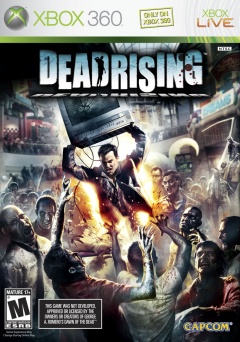 If there’s one new videogame fad I absolutely hate more than 3D anything, it has to be tiny text. I'm not sure what specifics need to be required to obtain tiny text status, but they most likely sit somewhere between squinting and extreme squinting. Over the years, text in videogames has gotten smaller and smaller, and I'm not exactly sure why. If you look back at screenshots of, say, SNES games, you'll see the font used is generally huge and spaced far apart, almost taking up one-third of the game's screen.
If there’s one new videogame fad I absolutely hate more than 3D anything, it has to be tiny text. I'm not sure what specifics need to be required to obtain tiny text status, but they most likely sit somewhere between squinting and extreme squinting. Over the years, text in videogames has gotten smaller and smaller, and I'm not exactly sure why. If you look back at screenshots of, say, SNES games, you'll see the font used is generally huge and spaced far apart, almost taking up one-third of the game's screen.
No mistaking what that fly is saying in Breath of Fire, that's for sure. This font size guarantees readability. Some might say this is a little too big. However, compare this font size with that of any modern game, and it's clear which gaming generation pandered to the literate more. Either way, this is a problem, and while not every videogame suffers from it, many big name titles shockingly do.
Radiant Historia or: How I learned to enjoy Japanese RPGs again
 A year ago I vented how Persona 3 and Odin Sphere had destroyed my love for Japanese RPGs, one of my favorite video game genres growing up. I might have been a bit dramatic about the situation, but the two games left such bad tastes in my mouth I had to take a break from the genre. This lasted about six months before I ventured back into the land of turn-based rising sun with Sega’s Infinite Space, a game that has all the trappings of crappy JRPGs but turned out to be pretty great in the end.
A year ago I vented how Persona 3 and Odin Sphere had destroyed my love for Japanese RPGs, one of my favorite video game genres growing up. I might have been a bit dramatic about the situation, but the two games left such bad tastes in my mouth I had to take a break from the genre. This lasted about six months before I ventured back into the land of turn-based rising sun with Sega’s Infinite Space, a game that has all the trappings of crappy JRPGs but turned out to be pretty great in the end.
Since then I’ve beaten Golden Sun 3: Dark Dawn, Black Sigil: Blade of the Exiled, and Radiant Historia. It’s been a mixed bag and a reminder that I’m not back in love with the genre, but one game in particular pretty much brought me back into the fold: Atlus’ newest Nintendo DS title, Radiant Historia.
Released in February, Radiant Historia chewed up more portable gaming time than anything I’ve played in recent memory. The idea that a 50 hour game should be imposing to someone with limited gaming time like myself didn’t matter, I plowed through it and the game was worth every minute. Here’s my review of Radiant Historia.
Retiring my Nintendo DS Lite
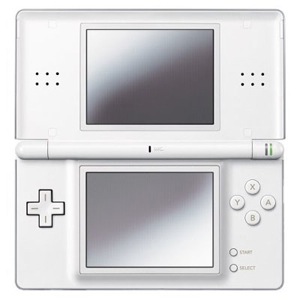 The Nintendo DS was the first game system that I followed from
announcement to launch. It was way back early 2004 that Nintendo first
hinted at a dual-screened handheld, then codenamed "Nitro." Considering
that was the only information available, it's not surprising that many
questioned Nintendo's strategy. Why two screens? Nintendo offered some
hypothetical benefits, like extra camera angles for sports games, but
their words were hardly convincing. Little did we know, it was
Nintendo's first step into the "blue ocean" strategy that would lead the
company to greener pastures.
The Nintendo DS was the first game system that I followed from
announcement to launch. It was way back early 2004 that Nintendo first
hinted at a dual-screened handheld, then codenamed "Nitro." Considering
that was the only information available, it's not surprising that many
questioned Nintendo's strategy. Why two screens? Nintendo offered some
hypothetical benefits, like extra camera angles for sports games, but
their words were hardly convincing. Little did we know, it was
Nintendo's first step into the "blue ocean" strategy that would lead the
company to greener pastures.
And yet, the original DS launch in November 2004 came and went with little fanfare. I was aware of the date, but didn't even realized that it arrived until I walked through a Wal-Mart electronics section and saw the grey handheld on the shelves. I kept walking. I was Nintendo faithful, sure, but it was hard to get excited about a launch lineup headlined by something nearly a decade old. It wasn't until the impending release of Kirby Canvas Curse in the summer of 2005 that I decided to bite the bullet, trading in half of my Gamecube library to GameStop in order to pay off the Nintendo DS and one game.
While it's certainly worth praise in its own right, I think Canvas Curse deserves to be remembered as the flagship of the DS library; it was the first of a fleet of incredible games that would follow in its wake. A system redesign, dubbed the DS Lite, accompanied the platform's newfound software vigor. Reduced size, brighter screens, and an iPod aesthetic provided enough worth for many to upgrade (including me) and many more to buy in for the first time. The sleeker profile and beefier games are what truly began the success story of the best-selling handheld game system ever.
But even Nintendo's first detour in the generations-old graphical arms race would lead to a dead end eventually. With the launch of a successor, the 3DS, history tells us that the best we can hope for is a year or two of life support for what was once Nintendo's "third pillar." It was an incredible performance that none could have predicted, and I think the Nintendo DS deserves a hearty round of applause before its curtain call. I've decided to contribute to the celebration in that age-old tradition of blogging: the top ten list.
In no particular order, here are ten great games that exemplified some aspect of the Nintendo DS' legacy.
RuneScape: Return to Canifis
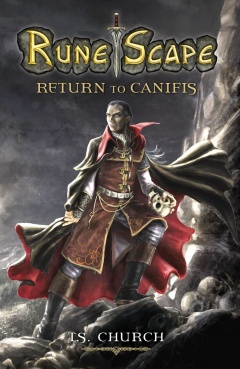 I read RuneScape: Betrayal at Falador a few months ago and enjoyed it for what it was: light-fantasy action with a pretty decent cast of characters in a world I was totally unfamiliar with. T.S. Church managed to bring me up to speed quickly on a large, established world filled with kingdoms, monarchs, and gods.
I read RuneScape: Betrayal at Falador a few months ago and enjoyed it for what it was: light-fantasy action with a pretty decent cast of characters in a world I was totally unfamiliar with. T.S. Church managed to bring me up to speed quickly on a large, established world filled with kingdoms, monarchs, and gods.
Church has readied RuneScape: Return to Canifis for release next week, and it is not only a better book than its predecessor, it actually makes for a pretty darn good fantasy read. Here is my review of T.S. Church’s new novel, RuneScape: Return to Canifis.
RuneScape: Return to Canifis was provided to me by the publisher, Titan Books.
Okamiden
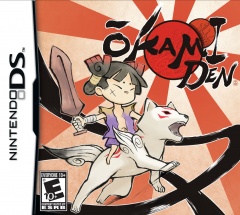 Before I say anything, I beat Okami. It was a fun game with some issues, and my PlayStation 2 version is an important part of my video game collection.
Before I say anything, I beat Okami. It was a fun game with some issues, and my PlayStation 2 version is an important part of my video game collection.
Before I say anything else, I didn’t like the first hour of Okami. It’s one of the few games I went back to play the first hour of because I thought it would illustrate well what a bad first hour looked like, and I was right. But it’s also a good example of where this site can go wrong. Some games like Okami just take a long time to get going, but this can also cause gamers to quit prematurely, like my friend and fellow writer Steve did.
Enter Okamiden, the chibi-ized version of Okami for the Nintendo DS. Okamiden will likely go down as one of the last good DS games before the 3DS is released in a few weeks (hopefully time remembers Radiant Historia, as well). Because I enjoyed Okami but didn’t like its first hour, Okamiden seems like the perfect game to try out for a bit. Will Capcom repeat the same mistakes they made with Okami? Will the game be too targeted for children? How will the gameplay and stylized graphics translate to the small screen?
Released yesterday, here is Okamiden’s first hour.
Nelson Tethers: Puzzle Agent
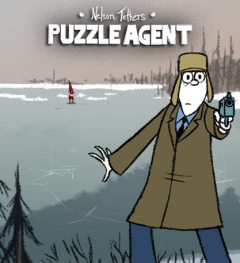 Nintendo has made a killing packaging classic pen-and-paper activities into DS games. Picross, Sudoku, Crosswords...but one of the major successes is the Professor Layton series. Developed by Level 5 and published by Nintendo outside of Japan, the franchise tasks players with solving puzzles and riddles in order to explore a storyline brimming with mystery. The puzzling travels of Professor Layton and his apprentice Luke are a hit with casuals and hardcore alike, selling over ten million units worldwide between the series' five titles.
Nintendo has made a killing packaging classic pen-and-paper activities into DS games. Picross, Sudoku, Crosswords...but one of the major successes is the Professor Layton series. Developed by Level 5 and published by Nintendo outside of Japan, the franchise tasks players with solving puzzles and riddles in order to explore a storyline brimming with mystery. The puzzling travels of Professor Layton and his apprentice Luke are a hit with casuals and hardcore alike, selling over ten million units worldwide between the series' five titles.
Of the three titles available outside Japan, I've only played the first, Curious Village. It's certainly full of cranium-crunching riddles, but I wasn't as taken by the rest of the package as many were. Decent production values aside, there wasn't much that impressed me from the strange story of Layton, Luke, and the peculiar villagers. I'd almost wished the game was a more sterile package, like so many other brainy DS productions. Most would probably disagree, seeing the worth in framing these teasers within a narrative.
Enter Nelson Tethers: Puzzle Agent. I bought this budget PC title in -- what else? -- a Steam bundle during the holiday season. Nelson clearly took notes from one of the Professor's lectures, because Puzzle Agent's premise is very similar to Curious Village, having the player explore a mysterious little town by solving riddles for its puzzle-obsessed populace. But unlike Curious Village, I actually enjoyed the overall experience even more than the puzzles that pervade it.
Mass Effect 2: Normandy Crash Site
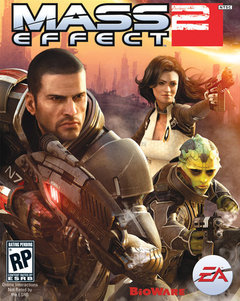 Mass Effect 3 is coming out this year, that just feels weird to write. This means not only will I get to play the finale to one of my favorite game series of all time in about eight months, but that Mass Effect 2 related reviews and articles will just feel terribly stale. Okay, to mostly everyone they already feel totally outdated, and I understand; who wants to read about year old downloadable content? Who knows, but I like writing about it.
Mass Effect 3 is coming out this year, that just feels weird to write. This means not only will I get to play the finale to one of my favorite game series of all time in about eight months, but that Mass Effect 2 related reviews and articles will just feel terribly stale. Okay, to mostly everyone they already feel totally outdated, and I understand; who wants to read about year old downloadable content? Who knows, but I like writing about it.
Normandy Crash Site was a zero day DLC available for Mass Effect 2, and is free for everyone who is a member of the Cerberus Network (which is required if you want to buy any downloadable content). It's mostly fan service for fans of the first Mass Effect, but it also serves up a surprising amount of emotion for its small package, especially to someone like me who put over 100 hours into the original.
I hope to cover the rest of Mass Effect 2's major downloadable content over the coming months, including Overlord and Lair of the Shadow Broker. I won't be reviewing (or buying, for that matter) the weapon or armor packs. I'm sorry, those are just lame. I also plan to re-read the first Mass Effect book for a review and read the third novel for the first time. My review of Mass Effect: Ascension has been available for a while. I have also covered Mass Effect 2's first paid for DLC, Kasumi's Stolen Memory.
Enslaved: Odyssey to the West
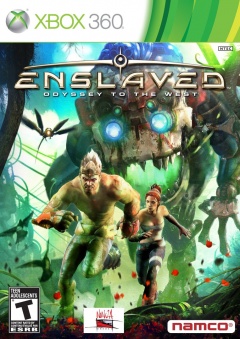 The First Hour is all about first impressions. But it’s very hard to go into a game without any preconceptions, probably best illustrated by my recent foray into Fable III, a sequel to a game I didn’t like very much. But sometimes games are just so far off your radar, that they fall into your lap as a mysterious disc, ready to be explored and uncovered.
The First Hour is all about first impressions. But it’s very hard to go into a game without any preconceptions, probably best illustrated by my recent foray into Fable III, a sequel to a game I didn’t like very much. But sometimes games are just so far off your radar, that they fall into your lap as a mysterious disc, ready to be explored and uncovered.
Enslaved: Odyssey to the West is one of those games. The only thing I know about it is what I can glean from its name and cover art. Let us see... the title alone seems to suggest something related to slavery and An American Tale, while the cover might make you wonder why the slaves are running from a Colossus. And then you might question the colorfulness of such a dire situation, and why that girl from Heavenly Sword is hanging around?
Yes, I am in the great situation of playing the first hour of a game I know nothing about. My first impressions can truly be formed by just the game itself and none of the surrounding hype. But first, a real quick primer. Enslaved: Odyssey to the West was released in 2010 for the Xbox 360 and PlayStation 3, developed by Ninja Theory (creators of Heavenly Sword, so that explains the girl). Scores were good, sales were lackluster, and Andy Serkis of Gollum fame did motion capture.
Okay, let’s get into this, here’s the first hour of Enslaved: Odyssey to the West.
